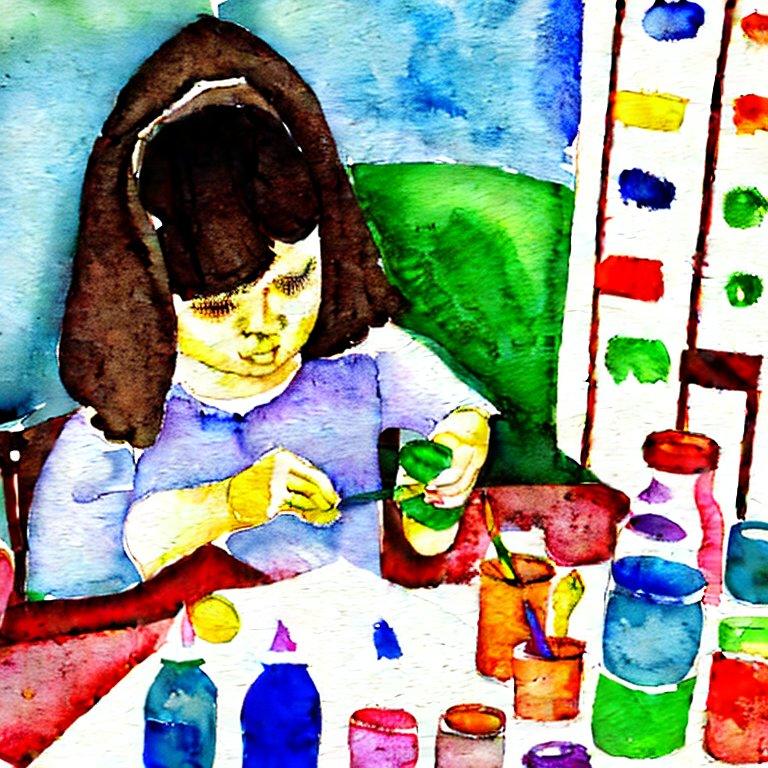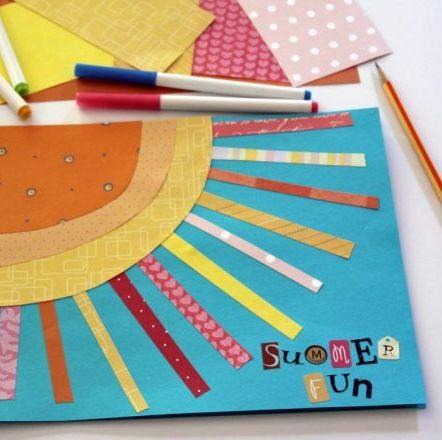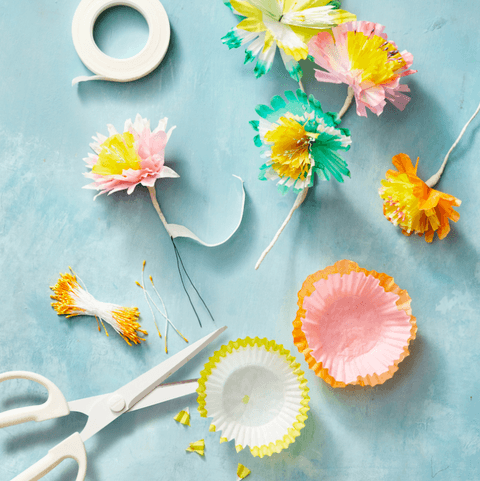Importance of Art and Craft in Child Development: Unlocking Creativity and Building Skills
Art and craft have always been an important part of human history, but in recent times, they have been recognized as a crucial aspect of child development. Art and craft activities allow children to express themselves, develop their imagination, and enhance their cognitive and motor skills. In this article, we will explore the importance of art and craft in child development and how parents and educators can encourage children to unlock their creativity and build essential skills through these activities.
Table of Contents
- Introduction: Why Art and Craft are Important for Children
- Creativity: The Key to Unlocking Imagination and Innovation
- Self-Expression: Building Confidence and Identity
- Cognitive Development: Enhancing Memory, Focus, and Problem-Solving Skills
- Motor Skills: Improving Coordination and Fine Motor Control
- Social and Emotional Development: Promoting Empathy and Communication
- Encouraging Art and Craft Activities at Home and School
- Choosing the Right Materials and Activities for Different Age Groups
- Tips for Supporting and Engaging Children in Art and Craft Activities
- Common Concerns and Misconceptions About Art and Craft in Child Development
- Conclusion: Celebrating the Power of Art and Craft in Children's Lives
Introduction: Why Art and Craft are Important for Children
Art and craft activities can provide children with a range of benefits that can positively impact their development in various areas. For instance, these activities can help children develop their creativity, self-expression, cognitive and motor skills, and social and emotional intelligence. By encouraging children to participate in art and craft activities, parents and educators can help them build a strong foundation for lifelong learning and personal growth.
Creativity: The Key to Unlocking Imagination and Innovation
Art and craft activities can help children unleash their creativity and imagination. By experimenting with different materials, colors, and textures, children can explore their artistic abilities and develop a unique style. Encouraging creativity in children can also help them become more innovative and adaptable in their future endeavors, such as problem-solving and critical thinking.
Self-Expression: Building Confidence and Identity
Art and craft activities allow children to express themselves freely and develop a sense of individuality. By creating their own artworks, children can build confidence in their abilities and develop a positive self-image. Art can also serve as a tool for emotional expression, enabling children to process complex feelings and experiences.
Cognitive Development: Enhancing Memory, Focus, and Problem-Solving Skills
Art and craft activities can also enhance cognitive skills in children. These activities require attention to detail, memory recall, and problem-solving skills, which can help children develop their cognitive abilities. By engaging in art and craft activities, children can also improve their focus and concentration, which can be beneficial in academic and personal life.
Motor Skills: Improving Coordination and Fine Motor Control
Art and craft activities involve the use of different materials and tools, which can help children improve their motor skills. These activities can develop children's coordination, dexterity, and fine motor control, which are crucial skills for everyday life, such as writing, drawing, and using utensils.
Social and Emotional Development: Promoting Empathy and Communication
Art and craft activities can also promote social and emotional development in children. By working collaboratively with others or sharing their creations, children can develop their communication skills and empathy for others. Art can also serve as a form of therapy, helping children process difficult emotions and experiences.
Encouraging Art and Craft Activities at Home and School
Encouraging art and craft activities at home and school is a wonderful way to help children develop their creativity, imagination, and problem-solving skills. These activities can also help children learn about different colors, textures, shapes, and materials while improving their hand-eye coordination and fine motor skills. Furthermore, art and craft activities can provide a fun and engaging way for children to express themselves and their emotions, while also boosting their self-esteem and confidence. With the right support and guidance, children can learn to appreciate the beauty and importance of art and craft in their lives.
Choosing the Right Materials and Activities for Different Age Groups
When it comes to choosing the right materials and activities for art and craft, it's important to consider the age of the children. For younger children, simpler activities with easier-to-use materials such as crayons, finger paint, and playdough are appropriate. As children grow older, they may be able to handle more complex activities and materials such as scissors, glue, and markers. Here are some ideas for different age groups:
- Toddlers (1-2 years old): Scribbling with crayons, playing with playdough, finger painting, and tearing and crumpling paper.
- Preschoolers (3-5 years old): Painting with brushes, using safety scissors to cut and paste, playing with clay, and creating collages.
- Elementary school-aged children (6-10 years old): Drawing and sketching, making papier-mâché, creating mosaics, and sewing and knitting.
Tips for Supporting and Engaging Children in Art and Craft Activities
Art and craft activities can be an enjoyable way for children to develop their creativity and problem-solving skills, but they may need some guidance and support to get started. Here are some tips for supporting and engaging children in art and craft activities:
- Provide a variety of materials: Having a range of materials available can encourage children to explore and experiment with different textures and colors.
- Offer guidance and encouragement: Children may need help getting started with an activity or may need reassurance that their efforts are valued and appreciated.
- Allow for creative expression: Children should be encouraged to create their own unique works of art rather than trying to replicate a specific example or template.
- Make it fun: Incorporating games or challenges into the activity can make it more engaging and enjoyable for children.
Common Concerns and Misconceptions About Art and Craft in Child Development
Despite the many benefits of art and craft activities for children's development, there are some common concerns and misconceptions that may deter parents or educators from encouraging these activities. Here are some examples:
- "It's messy": While it's true that some art and craft activities can be messy, there are ways to minimize the mess such as using protective clothing or doing the activity outdoors.
- "It's not academic": Art and craft activities can help develop important academic skills such as spatial reasoning and problem-solving.
- "It's only for artistic children": Art and craft activities can benefit all children regardless of their perceived artistic abilities.
Celebrating the Power of Art and Craft in Children's Lives
Art and craft activities can provide numerous benefits for children's development including improved creativity, problem-solving skills, and self-esteem. By providing the right materials and support, parents and educators can encourage children to explore their creative side and discover the joy of making things with their own hands. So let's celebrate the power of art and craft in children's lives and continue to foster their creativity and imagination.
FAQs:
Why is art and craft important for children?
Art and craft activities help children develop fine motor skills, creativity, imagination, self-expression, and problem-solving skills. They also enhance cognitive, social, and emotional development.
At what age can children start doing art and craft activities?
Children can start engaging in art and craft activities as early as 18 months old. At this age, they can finger paint, play with playdough, and scribble with crayons.
What are some easy art and craft activities that parents can do at home with their children?
Parents can engage their children in various art and craft activities, such as painting, drawing, coloring, making collages, creating sculptures with clay or playdough, and making simple crafts using paper, cardboard, and recycled materials.
How can teachers incorporate art and craft into their classroom activities?
Teachers can integrate art and craft activities into their lesson plans by using art materials to teach math, science, history, and language arts concepts. They can also provide opportunities for children to express themselves through art and craft activities during free play and recess.
Are there any safety precautions parents and teachers should take when engaging children in art and craft activities?
Parents and teachers should ensure that children use age-appropriate art materials and tools, supervise them during art and craft activities, and teach them proper handling and disposal of materials. They should also provide a safe and clean space for art and craft activities, especially when using messy materials like paint and glue.








